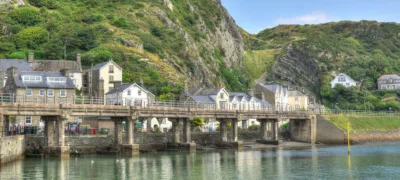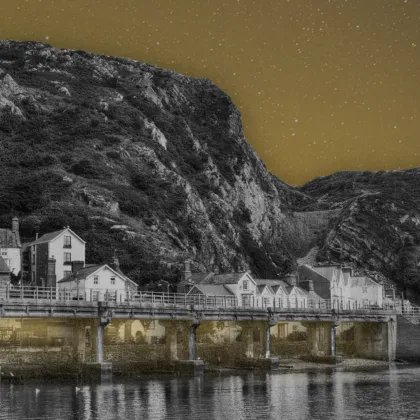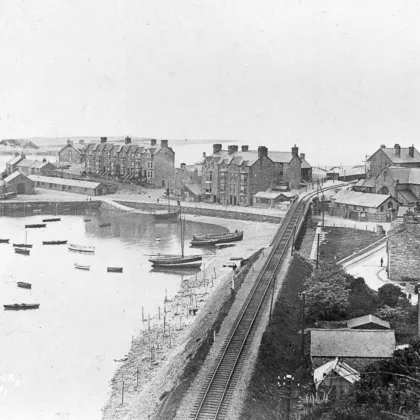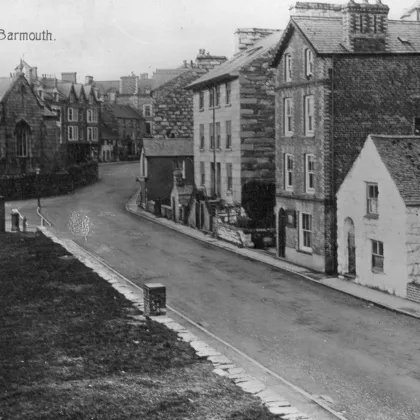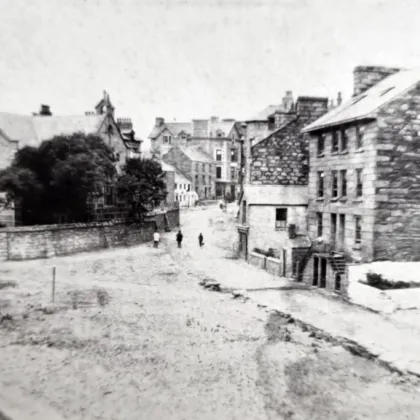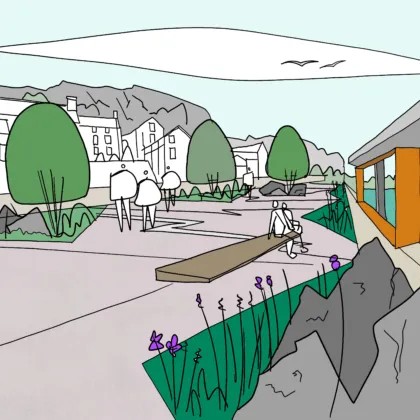We were appointed to work with Gwynedd Council to design the Public Realm for the Viaduct Gardens in Barmouth, in Wales.
At a glance
- Client
- Gwynedd Council
- Location
- Barmouth, mid Wales
Our landscape architects worked alongside our ecologists to develop a robust planting scheme for this coastal setting.
Barmouth was established around the shipbuilding industry of the 1700s. Ships were built in the shelter of the Mawddach estuary where they supported the booming wool industry in Merioneth.
Barmouth Bridge, also known as Barmouth Viaduct, opened in 1867 and contains a single standard gauge railway track and a pedestrian walkway. It’s a breathtaking part of the world.
The redevelopment of the area included hard engineered flood defence works to raise the sea wall and integration into the new public realm. The provision of a new external inclusive space that would enhance the landscape and its surrounding and which would recover quickly following heavy storm events was critical to the design.
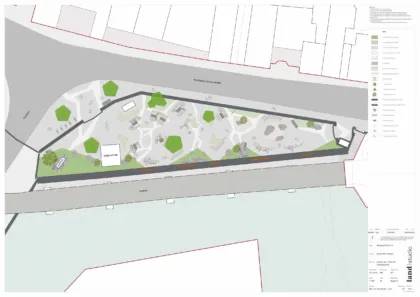
Our work involved designs to improve connectivity and common spaces for locals and visitors, de-cluttering the site and removing dense vegetation and enhancing the spectacular views across the estuary and to the hills beyond.
Whenever we start a project we aim to build with nature to ensure that our schemes are of their place. In Barmouth, this means embracing and working with the nature of a coastal environment ensuring that our designs sit within the landscape and not apart from it.
We’ve also looked at drainage design and used open and covered SuDS systems to collect surface water to retain it in planting beds where it will be filtered before draining through the sea wall.
The use of sustainable drainage systems which coordinated with the flood defence substructure and an early understanding of the below ground services and substructure helped inform the layout design.
Using the history of the space to provide context to the design and choosing materials and planting for ease of maintenance was key.
Our planting concept reflects that of the local flora, with hardy coastal pioneers, multi-stem birch trees and large specimen Scots pine trees. Hardy ferns will provide verdant ground cover and fill cracks between boulders.
We’ve suggested planting of structural grasses, sea cliff flowers like red valerian and sea campion, and upland plant mixes including clover, ox-eye daisies and poppies.
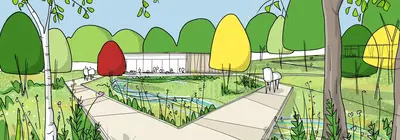
We were really impressed with Land Studio. They are creative, a delight to work with and captured our vision and their own vision perfectly.
Shahina Ahmad, Principal of Eden Girls’ School, Waltham Forest.

